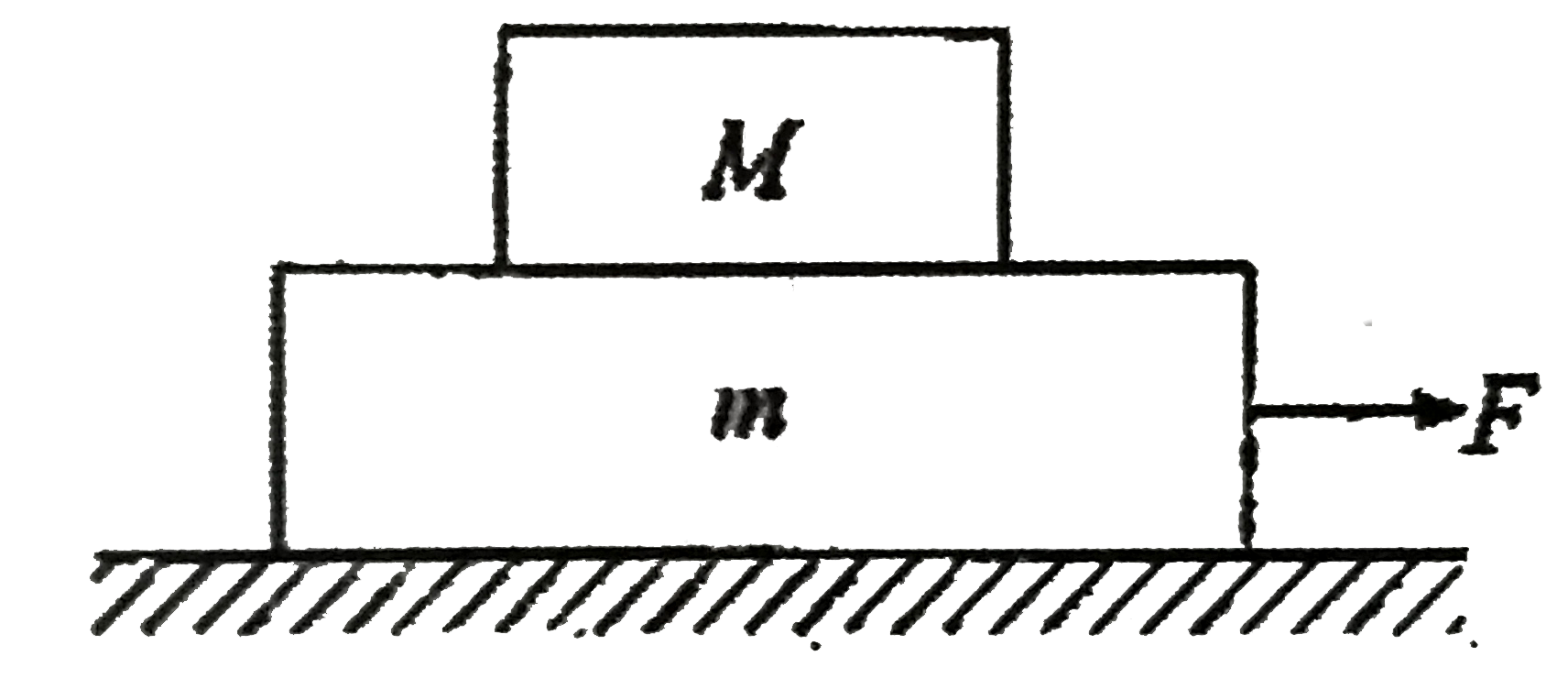Complete Solutions to Examples of chapter FRICTION, WORK POWER AND ENERGY of Class 11 book with complete answers and questions
| Class 11 | PHYSICS |
| Chapter | FRICTION, WORK POWER AND ENERGY |
| NN GHOSH | Examples |
| Number Of Questions | 13 |
| Academic Year | 2023-24 |
Starting from rest , a body slides down at `45^(@)` inclined plane in twice the time it takes to slide down the same distance in the absence of friction. The coefficient of friction between the body and the inclined plane is
View SolutionA body of mass 5 kg is being pulled up along a rouch inclined plane with an acceleration of `5 cm s^(-2)` by means of a weightless string running parallel to the plane. If the inclination of the plane be `45^(@)` to the horizontal and the coefficient of friction between the body and the plane be 0.3, find the pull in the string. `(g = 9.8 ms^(-2))`.
View SolutionA `5 kg` block is projected upwards with an initial speed of `10 ms^(-1)` from the bottom of a plane inclined at `30^(@)` with horizontal . The coefficient of kinetic friction between the block and the plane is `0.2`
a. How far does the block move up the plane ?
b. How long does it move up the plate ?
c. After time from its projection does the block again come to the bottom ? What speed does it arrive?
View SolutionA man can throw a stone horizontally with velocity `v_(1) = 5m//s`. What velocity `v_(2)` can he generate in the same stone if he throws it with the same force while standing on stakes on smooth ice ? The mass of the stone `m = 1` kg, the mass of the man `M = 60` kg. Will the man produce the same power in each case ?
View SolutionA mass 2 m is fixed at one end of a light rod of length `I`. What horizontal velocity should be imparled to the lower end so that it may just take up the horizontal position ? If the mass is now rearanged with m at the lower end and the other `m` at the middle, what velocity is required ?
View SolutionA particle of mass m rests on a horizontal floor with which it has a coefficient of static friction `mu`. It is desired to make the body move by applying the minimum possible force F. Find the magnitude of F and the direction in which it has to be applied.
View SolutionA stationary body of msas m is slowly lowered onto a rough massive platform moving at a constant velocity `v_(0) = 4m//s`. The distance the body will slide with respect to the platform `mu = 0.2 ` is :

View SolutionA board of mass m = 1 kg lies on a table and a weight of M = 2 kg on the board. What minimum force F must be applied on the board in order to pull it out from under the road ? The coefficient of friction between board and table is `mu_(2) = 0.5` : (Take `g = 10 m//s^(2)`)

View SolutionWhat must be the minimum coefficient of friction `mu` between the tyres of the drive wheels of a car and the road, if the car and the road, if the car of mass `m=2` tons and load `M=4` tons, has an acceleration `a=0.2 ms^(-2)` ? Consider the problem for two cases : (a) all the wheels are driven , (b) only the rear wheels are driven. Assume that the centre of gravity of the car lies at the mid-point between the axes of the wheel and the centre of gravity of the load above the rear axle.
View SolutionA wooden pile of mass `m=3kg` is driven into the driven into the ground by suceessive blows from a hammer of mass `M=10kg` falling from a height `h=3`m on the head of the pile. If under the action of a single blow the pile penetrates a distance `delta = 5` cm, determine the resistance R to penetration.
View SolutionA particle of mass M is dropped vertically into a medium that offers resistance proportional to the velocity of the particle. The buoyancy of the medium is negligible and the resisting force is `f_(0)` when the velocity is `1 ms^(-1)`. What uniform velocity will the particle finally acquire ?
View SolutionA small ball of mass `m=1` g is placed at the bottom of a watch glass of radius `R=1` m. It is displaced by `h=1` cm along the glass surface and released. Calculate the total distance deseribed by it before it comes to rest at the bottom, if `mu =0.1` is the coefficient of friction between the ball and the watch glass.
View SolutionA triangular loop ABC of string is passed over two small frictionless pulleys A and B. `AB = 2l and BC = AC = eta l`. Two masses m and M are attached to the mid-point O of AB and C respectively and `m` is released. Find the condition that m and M may cross each other.
View Solution
Examples questions and complete solutions for chapter FRICTION, WORK POWER AND ENERGY of BHARATI BHAWAN PHYSICS (HINGLISH) of Class 11